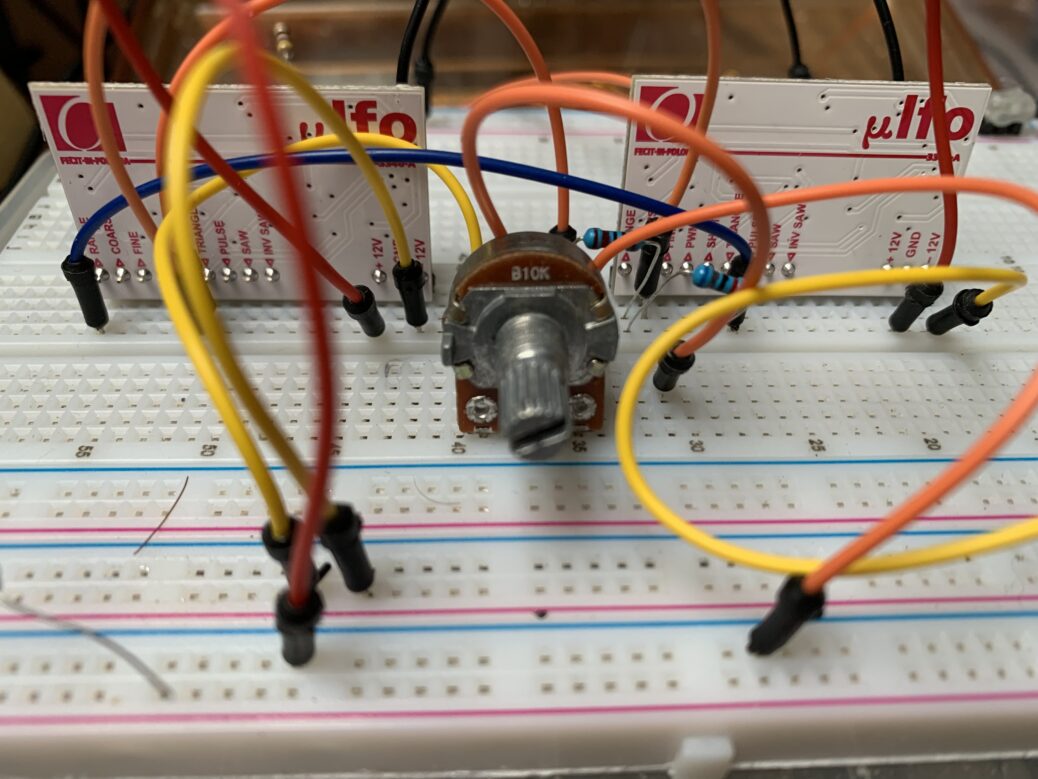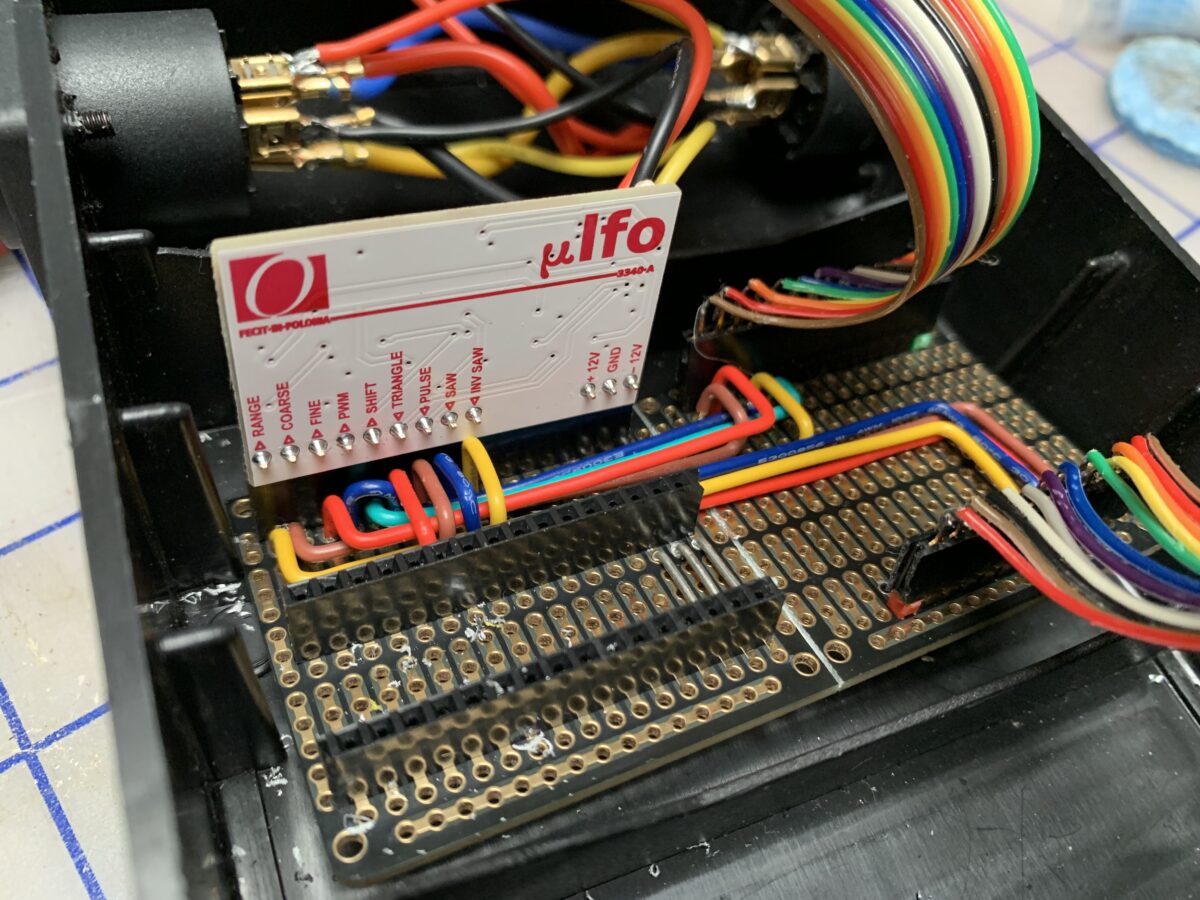If you’ve been following my Instagram, you’ve seen me working to build a noizmachin called Kerberos, a triple low-frenquency oscillator (LFO) of of Syntaxis µLFO modules. Generally, LFOs don’t produce sounds themselves; rather, they’re made to send repeating patterns of control to other modules. So a slow sine wave that’s controlling the pitch of an audio-frequency oscillator (a voltage-controlled oscillator, VCO) can make it play a sliding scale.
I find that I always run out of LFOs. They’re a system that gives a structure and overall sense of the sounds over time. You can think of them as the sheet music; they tell the other instruments how to sound, with most of the timbre defined by the audio-frequency oscillators as the LFO manipulates their parameters. Several of them together can syncopate with each other, can amplify or suppress each other, and can even control each other’s rates of change.

What’s really exciting is sending one LFO’s signal to another, so the frequency of the second is changed by the current amplitude of signal out of the other. You wind up with frequencies of frequencies. You can find syncopated rhythms, new timbres, and very slow evolution through this process and I find it really beautiful.
But I’ve only had three regular oscillators at my disposal until now, all on one instrument, with only one optimized for use as an LFO. So if I wanted to use two as low-frequency oscillators, I only have one audio-frequency oscillator to work with. And one of my greatest interests is *really* low frequency oscillators that are continually, subtly changing other parameters, including their own so there are comprehensible themes throughout an hour of music, but no actual repetition.
The Syntaxis Micromodular line
(BTW, support my Patreon for more science fiction music, art, stories, and games!)
So when I found out about Syntaxis’ Micromodular line of analog audio development boards, I was really excited. They offer a full set of them for 810,00zł (about $213 as of this writing), but all I wanted was a set of several LFOs that I could use together. I got three of their µLFO modules to combine into a single instrument I can cross- connect.
Building out the µLFO modules
They’ve been really fun to work with, in no small part because they’re proving to have Arduino-like resilience to the errors that come about naturally in the process of learning something.
For instance, I’ve connected its power backward, send ±12V to the +5V inputs, shorted them out, and dropped them and the magic smoke has dutifully stayed inside the op amps rather than coming out enthusiastically, like they would had I built them myself. That kind of ruggedness brings a confidence that really encourages experimentation.

Experimentation has also demonstrated a peculiarity: some of the inputs are genuinely ±12V while others only really accept the 0:+5V sweep in the center. While ±12V is great for getting the full range with subtlety, it means that you can’t simply connect all your potentiometer controls to a single power and ground bus; the 5V ones need additional circuitry to run off the power provided by the module itself. They sell a power supply to use, or you can draw your own 5V source from your modular power supply, or use a high-quality computer power supply like I do — or simply use a USB phone charger. But you still have to solder together two separate sets of potentiometer knobs for the different voltage ranges with different voltage dividers going into them to give them the full authority they can have.
The modules are made with 2.54mm pitch male headers to insert into protoboard, perfboard, or a solderless breadboard, which means that whatever you want to do with it, you can design it by trying stuff out, then solder sockets into your perfboard or PCB for your final draft all without risking the component.
Most of the modules cost $30 or less, which means that you could build yourself a really nice, highly reliable Eurorack out of these for very little money, with abundant room for customization. Instead of buying a used Neutron, you can build something comparable, but just exactly the way you like it, prototyping it all out on solderless breadboards as you go.
I haven’t tried the other modules yet, but if the µLFO is any indication, they’re probably pretty good. I’d like to try some more of them once Kerberos is fully operational. Maybe the mixer. After all, it’s $30 and I’ve already got a lot of potentiometers and an ammo box.
Might as well try it!

